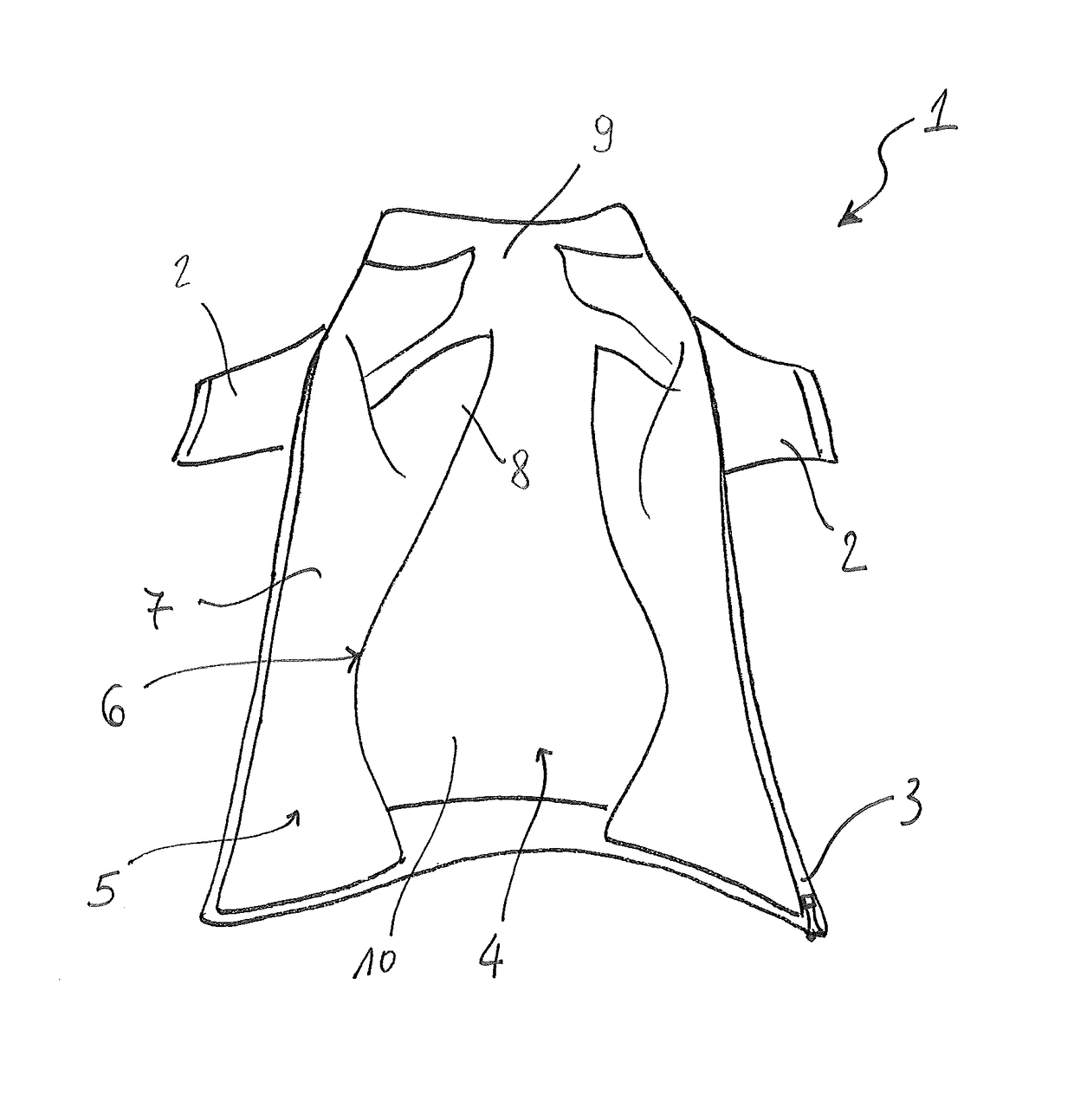Cycling jersey
a technology of cycling jerseys and jerseys, applied in the field of cycling garments, can solve the problems of not being able to meet the above requirement of efficient removal of not being able to directly contact the skin, and not being able to meet the above requirement of removing sweat from the user's body, so as to eliminate the problem of creases
- Summary
- Abstract
- Description
- Claims
- Application Information
AI Technical Summary
Benefits of technology
Problems solved by technology
Method used
Image
Examples
Embodiment Construction
[0021]FIG. 1 shows an open cycling jersey 1 with short sleeves 2 and a front zip fastener 3. The jersey 1 is a short-sleeved jersey for summer use, this being however not limiting for the invention.
[0022]The jersey 1 has a structure made of an outer fabric layer 4 and an inner fabric layer 5 to act as base layer.
[0023]The inner layer 5 is stitched by means of seams 6 on the inside of the outer layer 4.
[0024]The inner layer 5 partially lines the inside of the outer layer 4. In the example of the FIGURE, said inner layer 5 comprises a torso portion 7 and side portions 8. When the jersey 1 is worn, the side portions 8 extend between the hips and the underarms and wrap around the side part of the torso and of the back of the user. On the contrary, the collar portion 9, the sleeve portions 2 and the back portion 10 are not internally lined with said inner layer 4.
[0025]The outer layer 4 of the jersey is made from a suitable elasticised fabric, for example polyamide or polyester mixed wit...
PUM
 Login to view more
Login to view more Abstract
Description
Claims
Application Information
 Login to view more
Login to view more - R&D Engineer
- R&D Manager
- IP Professional
- Industry Leading Data Capabilities
- Powerful AI technology
- Patent DNA Extraction
Browse by: Latest US Patents, China's latest patents, Technical Efficacy Thesaurus, Application Domain, Technology Topic.
© 2024 PatSnap. All rights reserved.Legal|Privacy policy|Modern Slavery Act Transparency Statement|Sitemap


